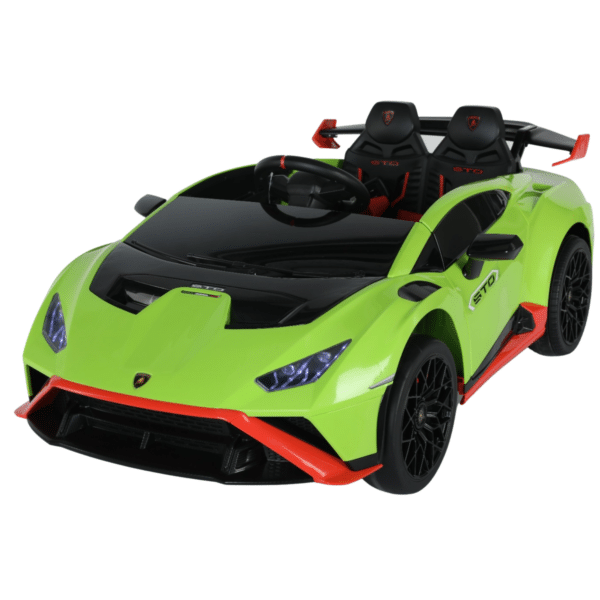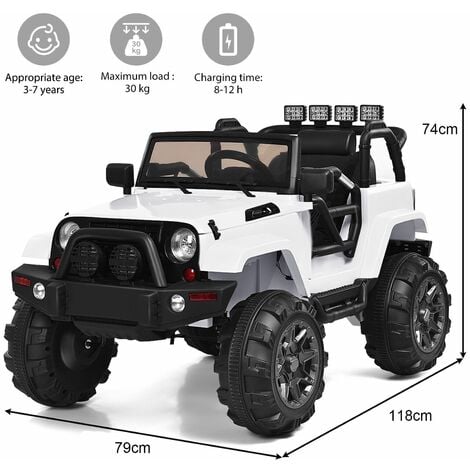Great Advice To Deciding On Kids Cars
Wiki Article
What Is The Battery Life Of An Electric Ride-On Kids Car?
Understanding the battery and charging time of an electric kid's ride-on vehicle is crucial to ensuring optimal performance and continuous time for play. Here's what you need to know about the battery type -
Most electric ride on cars for kids run on rechargeable batteries. They are either lead-acid or lithium-ion. In general, lithium-ion rechargeable batteries offer a longer battery life as well as quicker charging times than lead-acid ones.
Battery Capacity
The battery's capacity, measured in ampere-hours (Ah) or Watt-hours (Wh), determines how long the ride-on car can operate on a single charge. Batteries with higher capacity allow for a longer play time before needing to recharge.
Run Time -
The running time of an electric ride-on car refers to how long it can continue to operate on a single charge. This depends on a number of elements, including the motor, the battery along with the terrain and the weight or the rider.
For electric ride on cars The typical runtime for electric ride on cars is between 30 and 2 hours from one battery charge. Nevertheless, some batteries with large capacity could have longer time-to-run.
Time to Charge
The charging time is the amount of long it will take to recharge a fully depleted battery. The charging time can differ based on the battery's capacity, the specifications of the charger and charging method.
In general the time to charge electric vehicles is between 8 and 12 hours. Certain models, especially those that use lithium-ion batteries, may have faster charging times.
The battery's longevity and safety can be assured by following the manufacturer's charging recommendations. Overcharging or undercharging the battery can impact its performance and longevity.
Charge Methods -
Chargers for electric ride-ons are usually connected to standard electrical outlets. Some models are equipped with fast-charging features or a smart charger which monitors the state of the battery and adjusts charging rates according to the condition.
To avoid damaging the battery or the electrical system ensure that the charger and port on the ride-on are compatible.
Additional Batteries
Certain electric ride-on vehicles may allow you to purchase extra batteries, or even spare batteries for extended playtime. If you have additional batteries on-hand, you can quickly swap them out for fully-charged ones to reduce downtime.
Knowing the battery life of your electronic kids' ride-on car as well as the time it takes to charge will allow you to ensure that your child has fun and exciting adventures while exploring their environment. It is crucial to recharge the battery as frequently as possible and follow proper charging methods. This will improve the performance of your battery. Follow the top kids cars for blog info including ride on toy, two seater childrens electric cars, kiddies cars, toy car toy car, riding digger, ride on digger, ride a toy, toy in car, toy car for car, car toy car toy and more. .

What Are The Indoor And Outdoor Versions Of Children's Cars Made?
These models have been designed with features and characteristics that are specific to the environment and use scenario, outdoors or indoors. The following are the key differentiators between these models Indoor Use Cars
Dimension and weight: Indoor cars are usually smaller and lighter, allowing them to fit into tight spaces such as living rooms, bedrooms, and hallways. They are compact enough to fit through tight corners and narrow passageways without causing damage to furniture or walls.
Low Ground Coverage - Cars that are designed for indoor use have an extremely low ground coverage to keep them from getting stuck or snagged against obstacles such as carpets and thresholds. This ensures smooth and unhindered movement across indoor surfaces.
Smooth Wheels: The wheels on indoor vehicles are typically constructed from smooth materials such as rubber or plastic. This creates traction and grip for smooth surfaces, such as flooring made of hardwood, laminate floors, or tiles. The wheels are made for indoor use in order to minimize noise, and protect surfaces from scratching.
Temporary Speed - Indoor vehicles are usually limited to a slower speed to keep control and safety. This can help to prevent accidents and collisions with furniture, walls, and other objects in indoor spaces.
Outdoor Use Cars -
Durable construction - Outdoor vehicles are built using durable materials like metal or tough plastic, to withstand rough handling and elements of nature such as the sun, humidity and temperature changes. They are immune to damage from the elements.
The greater the clearance on the ground is, the more able they are to deal with bumps and uneven terrain. They can now navigate rough surfaces, including pavements as well as gravel and grass.
Traction tires - Tires for outdoor vehicles usually come with treads and patterns which provide better grip and traction on uneven or slippery surfaces. This allows for better control and stability while driving over rough terrain.
Weather Resistant: Cars designed for outdoor use typically have weather-proof features like sealed electronics, or casings with waterproof coatings. They can also make use of the rust-resistant materials to avoid damage caused by water. This permits the vehicle to endure rain, mud or puddles and still perform well.
Outdoor-use cars have greater maximum speed to accommodate huge spaces and distances. This may provide an exciting and adventurous riding experience for children who are exploring the outdoors.
These design features and characteristics will assist parents in choosing the ideal car for their kids that will meet their needs and the surrounding. See the recommended discover more about McLaren kids car for site tips including electric two seater cars, ride a toy, ride a toy, a toy car, a toy car, digger ride, toy cars, electric rideons, two seater electric cars, toy the car and more. .

How Do You Set A Budget When Buying A Ride-On Automobile For Your Child?
Setting a budget for your kid's ride-on vehicle purchase requires you to consider a variety of factors like quality, durability, and your financial situation. This is how to find the best budget and price-to-value.
Start by looking up the average price of the ride-on cars for kids with the features you desire. Toy stores as well as online retailers and manufacturers' websites are a great source of information on pricing.
Identify Must-Have Features -
Select the features your child requires to ensure their safety and enjoy. The cost of a ride-on car will be influenced by features like realistic sounds or working headlights. Seatbelts are also essential.
Prioritize features according to your child's tastes and financial budget.
Take into consideration durability and length of Life
Search for durable ride-ons composed of high-quality components such as metals and plastics that can withstand years of use and extreme outdoor conditions.
Check out reviews and ask for advice from other parents in order to determine the longevity and durability of the various models. It might be worthwhile investing in a top-quality vehicle upfront to save on costly repairs or replacements.
Find the best prices from various retailers Compare prices from different retailers
Shop around and compare prices across various retailers to determine the best value for your money. Visit local department stores, toy stores and specialty shops for competitive pricing and promotions.
You can save money by keeping your eye on sales, clearances, and discounts.
Include extra costs in your budget
If you're thinking about a ride-on vehicle for your child, think about the extra costs, such as the cost of shipping as well as taxes and other accessories.
Budget your total costs of ownership including accessories and maintenance to ensure you can afford them.
Make a budget that is realistic
Set a budget that is practical and in line with your priorities and needs. Consider the features, durability, and long-term use when setting your budget for a car ride.
Spending too much on unneeded features or items which don't enhance the play experience of your child isn't recommended.
Be aware of the value of long-term planning -
A kids' ride-on car that is sturdy, flexible and can grow with your child can be an excellent investment. It might be worthwhile to invest in a more expensive model that has more features in the long-term.
Set a realistic budget for purchasing an automobile that rides on for children and compare costs, features and endurance. Prioritize features that are important for your child's safety and enjoyment, while keeping your budget in mind. Check out the best JCB ride on toys kidscars.co.uk recommendations for site recommendations including car electric ride on, digger ride, electric ride on cars, childrens electric cars, ride ons, electric ride along car, childrens electric ride on, electric ride along car, remote control childrens car, electric ride on and more. .
